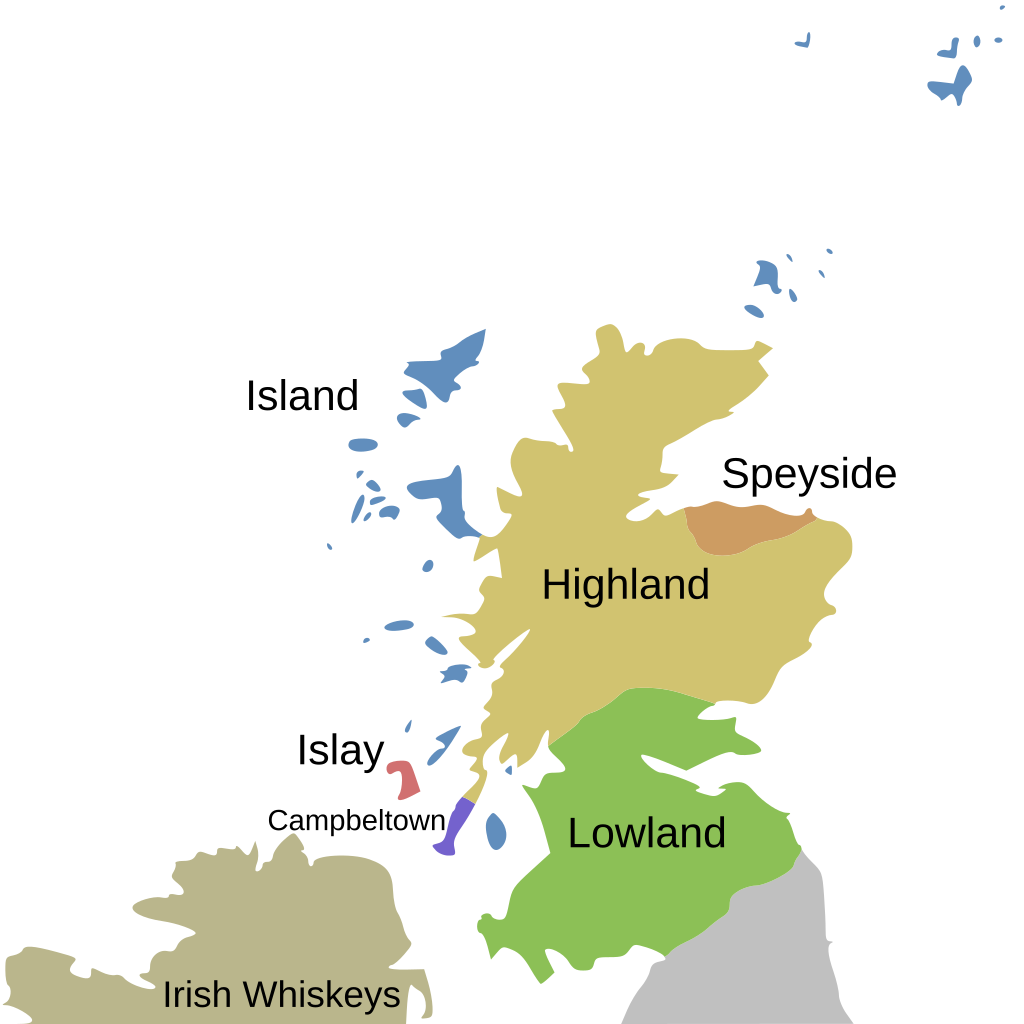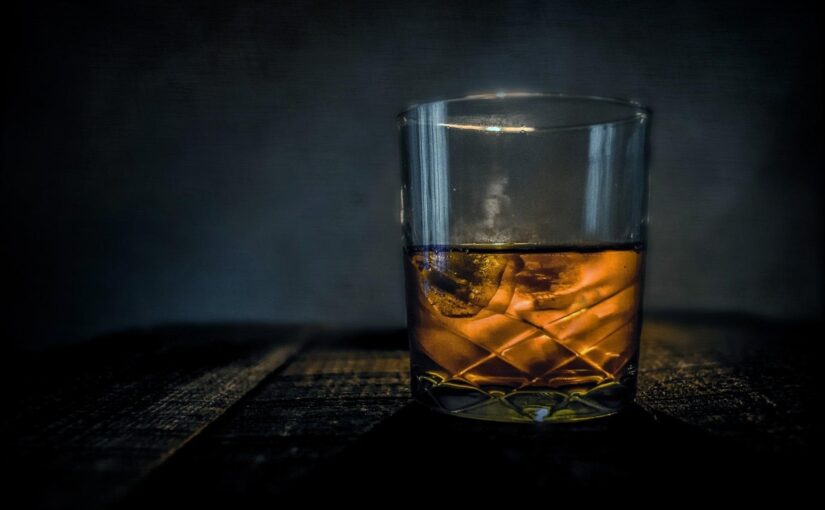Picture this: It’s a crisp evening in the Scottish Highlands, the year 1822, and King George IV is raising a glass in Edinburgh, demanding nothing but the finest “Glenlivet” whisky, smuggled from the misty glens despite the law’s watchful eye. This royal endorsement wasn’t just a whim; it captured the deep cultural heartbeat of Scotch whisky, a spirit woven into Scotland’s fabric of clan gatherings, literary tales, and resilient traditions. From ancient illicit stills to modern global icons, Scotch whisky embodies Scotland’s rugged landscapes and storied past. Today, with over 140 distilleries across distinct regions, each bottle tells a tale of terroir, technique, and time-honored craft. Join me on a sensory voyage through the major Scotch whisky regions: Speyside, Highlands, Lowlands, Islay, Campbeltown, and the Islands. We’ll uncover their histories, flavors, and the geographical whispers that shape every sip.

Speyside: The Heart of Elegance and Fruit
Nestled along the fertile banks of the River Spey, Speyside boasts the highest concentration of distilleries in Scotland, a testament to its whisky-making legacy that dates back to the early 19th century. This area, once a haven for smugglers evading taxes, flourished after the 1823 Excise Act legalized distilling, transforming hidden operations into thriving enterprises. The region’s mild climate and abundant soft water sources, drawn from crystal-clear burns, create ideal conditions for barley cultivation and maturation.
Speyside whiskies shine with their smooth, complex profiles: think lush fruits like apple and pear, laced with honey, vanilla, and subtle spice, often matured in sherry casks for added depth. Production here emphasizes elegance, with minimal peat to let the malt’s natural sweetness emerge. Geography plays a starring role; the sheltered glens and heather-covered hills infuse a refined smokiness, while traditions of long fermentation yield nuanced layers. Notable distilleries include The Macallan, renowned for its luxurious sherry-oak influence, and Glenfiddich, a pioneer of single malt exports.
Take Glenfiddich 12 Year Old as an example: its pear-drop freshness and oaky warmth evoke a stroll through blooming orchards, a direct nod to Speyside’s verdant valleys. Or savor The Macallan’s rich, dried fruit notes, shaped by the region’s tradition of premium cask selection. These whiskies invite you to linger, their fruity symphony a celebration of Speyside’s harmonious blend of nature and craft.
Highlands: Diversity in Every Dram
Spanning vast, dramatic landscapes from coastal cliffs to inland moors, the Highlands region is Scotland’s largest, encompassing a whirlwind of styles since distillation began in earnest in the late 18th century. Historical tax divides, like the 1784 Wash Act’s Highland Line, pushed innovation here, fostering a spirit of resilience amid rugged terrain. Distilleries draw from diverse water sources: peaty lochs in the west, pure springs in the east, all under the influence of cool, variable weather.
Highland whiskies vary wildly, from light and floral to robust and peaty, often with heather, spice, and maritime hints. Production methods highlight this range; some use peated malt for smokiness, others focus on extended aging in bourbon or sherry casks. The geography, with its salty coasts and heathery peat, imparts earthy, firm dryness in western expressions, while eastern ones bloom with fruit. Traditions of coastal malting add a briny edge, reflecting the region’s seafaring heritage.
Iconic distilleries like Glenmorangie offer elegant, citrusy drams, and The Dalmore excels in rich, oaky profiles with notes of Christmas cake and toffee. Consider Oban 14 Year Old: its waxy texture and subtle smoke conjure crashing waves against Highland shores, a perfect illustration of the area’s coastal influence. These whiskies capture the Highlands’ untamed spirit, bold and ever-changing.
Lowlands: Gentle Giants of Grace
South of the Highland Line, the Lowlands stretch across rolling farmlands and urban edges, where whisky-making traces to the late 18th century, evolving amid industrial growth and early tax reforms. The 1823 Excise Act spurred rationalization, leading to distilleries that prioritized accessibility over intensity, though many shifted to grain spirit for blends during tough times like Prohibition. Proximity to cities like Glasgow fueled global exports, but the region faced closures in the 20th century before a recent revival.
Lowland whiskies are typically light, delicate, and unpeated, with grassy, floral notes of honeysuckle, ginger, and cream. Triple distillation, a historical hallmark, softens the spirit, creating an approachable elegance. The flat, fertile geography provides pure water and mild peat-free malt, while traditions of subtle maturation in ex-bourbon casks enhance buttery smoothness. This gentleness reflects the Lowlands’ agricultural roots and less dramatic climate.
Standouts include Glenkinchie, with its crisp, malty charm, and the reborn Rosebank, famed for citrus-forward florals. Auchentoshan Three Wood exemplifies this: its nutty sweetness and gentle spice, matured in three cask types, mirror the region’s verdant meadows. Sipping it feels like a serene countryside walk, understated yet profoundly inviting.
Islay: The Smoky Sovereign of the Seas
Off Scotland’s west coast, Islay (pronounced “eye-luh”) is a windswept isle where whisky production has thrived since the 18th century, fueled by peat-rich bogs and a community deeply tied to the craft. Known as the “Queen of the Hebrides,” its distilleries, many founded in the 19th century, weathered smuggling eras and wars, emerging as beacons of peated excellence. The island’s isolation bred self-sufficiency, with locals harvesting peat for fuel and flavor.
Islay whiskies roar with intense peat smoke, iodine, seaweed, and medicinal notes, balanced by brine and fruit. Production involves heavy peating of barley over local fires, infusing that signature fiery character, often double-distilled for potency. Geography reigns supreme: salty Atlantic winds and peaty water from lochs like Loch Gorm impart maritime pungency, while traditions of coastal maturation add oily depth. Not all are extreme; some offer lighter, nutty profiles.
Ardbeg and Laphroaig lead with their phenolic punch, Lagavulin with rich, tarry smoke. Lagavulin 16 Year Old transports you to a stormy shore: waves of peat, vanilla, and sea salt crash on the palate, embodying Islay’s wild, elemental soul. These drams demand attention, a testament to the island’s unyielding traditions.
Campbeltown: The Resilient Remnant
Once dubbed the “whisky capital of the world,” Campbeltown on the Kintyre Peninsula boomed in the 19th century with over 30 distilleries, thanks to fertile fields, peat bogs, and a deep harbor for exports. The 1823 Excise Act legalized the illicit trade, sparking growth, but overproduction, wars, and economic slumps led to mass closures by the 1930s. Today, just three survive, preserving a legacy of bold, briny spirits.
Campbeltown whiskies blend salt, smoke, fruit, vanilla, and toffee in robust, full-bodied forms. Production often involves partial triple distillation and peated malt, yielding oily textures. The peninsula’s maritime climate and traditions of local sourcing (barley from nearby farms, peat from bogs) infuse a distinctive salinity, evoking herring fleets of yore.
Springbank and Glen Scotia anchor the region, with Kilkerran from Glengyle adding lighter notes. Springbank 10 Year Old bursts with tropical fruit, smoke, and brine, a nod to Campbeltown’s harbor heritage. It’s a sip of revival, hearty and unpretentious.
Islands: Maritime Mosaics of Mystery
Scattered across the Hebrides (excluding Islay), the Islands region unites diverse isles like Skye, Orkney, and Jura, where distillation dates to the 18th century amid Viking influences and smuggling lore. Each island’s isolation fostered unique styles, from peaty to herbal, shaped by harsh winds and ancient peat.
Island whiskies often feature coastal salinity, smoke, and fruit, with varying peat levels. Production draws on local peat and water, matured in sea-sprayed warehouses. Geography delivers briny notes from Atlantic gales, while traditions of small-batch crafting add complexity.
Talisker on Skye offers peppery smoke, Highland Park on Orkney heather honey. Talisker 10 Year Old surges with volcanic spice and seaweed, mirroring Skye’s rugged cliffs. These whiskies whisper of distant shores, wild and evocative.
As our journey ends, remember: Scotch whisky’s magic lies in its diversity. Grab a bottle from each region, host a tasting, or book that trip to Scotland’s distilleries. Your palate awaits discovery. Slàinte!
References:
- https://www.scotch-whisky.org.uk/discover-scotch/enjoying-scotch/scotch-whisky-regions/
- https://wineware.co.uk/pages/scottish-whisky-regions-guide
- https://www.edinburghwhiskyacademy.com/blogs/explainer/explainer-the-scotch-whisky-regions
- https://www.diffordsguide.com/beer-wine-spirits/category/577/highland-single-malt-whisky
- https://www.thewhiskyexchange.com/inspiration/article/17677/lowland-whisky
- https://tastetalk.co.uk/whiskies-of-islay-peaty-heart-of-scotch-whisky/
